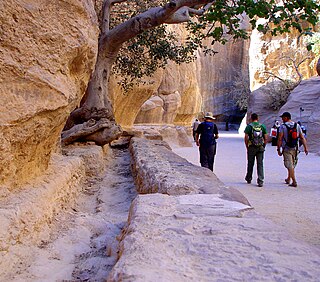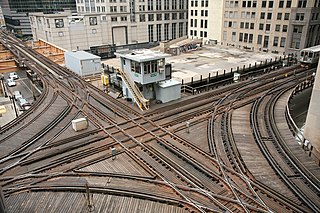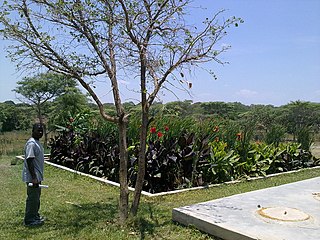Related Research Articles

Civil engineering is a professional engineering discipline that deals with the design, construction, and maintenance of the physical and naturally built environment, including public works such as roads, bridges, canals, dams, airports, sewage systems, pipelines, structural components of buildings, and railways.

Environmental engineering is a professional engineering discipline related to environmental science. It encompasses broad scientific topics like chemistry, biology, ecology, geology, hydraulics, hydrology, microbiology, and mathematics to create solutions that will protect and also improve the health of living organisms and improve the quality of the environment. Environmental engineering is a sub-discipline of civil engineering and chemical engineering. While on the part of civil engineering, the Environmental Engineering is focused mainly on Sanitary Engineering.

Infrastructure is the set of facilities and systems that serve a country, city, or other area, and encompasses the services and facilities necessary for its economy, households and firms to function. Infrastructure is composed of public and private physical structures such as roads, railways, bridges, tunnels, water supply, sewers, electrical grids, and telecommunications. In general, infrastructure has been defined as "the physical components of interrelated systems providing commodities and services essential to enable, sustain, or enhance societal living conditions" and maintain the surrounding environment.

Stormwater, also written storm water, is water that originates from precipitation (storm), including heavy rain and meltwater from hail and snow. Stormwater can soak into the soil (infiltrate) and become groundwater, be stored on depressed land surface in ponds and puddles, evaporate back into the atmosphere, or contribute to surface runoff. Most runoff is conveyed directly as surface water to nearby streams, rivers or other large water bodies without treatment.

A water supply network or water supply system is a system of engineered hydrologic and hydraulic components that provide water supply. A water supply system typically includes the following:
- A drainage basin
- A raw water collection point where the water accumulates, such as a lake, a river, or groundwater from an underground aquifer. Raw water may be transferred using uncovered ground-level aqueducts, covered tunnels, or underground water pipes to water purification facilities.
- Water purification facilities. Treated water is transferred using water pipes.
- Water storage facilities such as reservoirs, water tanks, or water towers. Smaller water systems may store the water in cisterns or pressure vessels. Tall buildings may also need to store water locally in pressure vessels in order for the water to reach the upper floors.
- Additional water pressurizing components such as pumping stations may need to be situated at the outlet of underground or aboveground reservoirs or cisterns.
- A pipe network for distribution of water to consumers and other usage points
- Connections to the sewers are generally found downstream of the water consumers, but the sewer system is considered to be a separate system, rather than part of the water supply system.

A combined sewer is a type of gravity sewer with a system of pipes, tunnels, pump stations etc. to transport sewage and urban runoff together to a sewage treatment plant or disposal site. This means that during rain events, the sewage gets diluted, resulting in higher flowrates at the treatment site. Uncontaminated stormwater simply dilutes sewage, but runoff may dissolve or suspend virtually anything it contacts on roofs, streets, and storage yards. As rainfall travels over roofs and the ground, it may pick up various contaminants including soil particles and other sediment, heavy metals, organic compounds, animal waste, and oil and grease. Combined sewers may also receive dry weather drainage from landscape irrigation, construction dewatering, and washing buildings and sidewalks.
The Melbourne and Metropolitan Board of Works (MMBW) was a public utility board in Melbourne, Australia, set up in 1891 to provide water supply, sewerage and sewage treatment functions for the city. In 1992, the MMBW was merged with a number of smaller urban water authorities to form Melbourne Water. MMBW was abolished in 1992.

Sanitary engineering, also known as public health engineering or wastewater engineering, is the application of engineering methods to improve sanitation of human communities, primarily by providing the removal and disposal of human waste, and in addition to the supply of safe potable water. Traditionally a branch of civil engineering and now a subset of environmental engineering, in the mid-19th century, the discipline concentrated on the reduction of disease, then thought to be caused by miasma. This was accomplished mainly by the collection and segregation of sewerage flow in London specifically, and Great Britain generally. These and later regulatory improvements were reported in the United States as early as 1865.
Building services engineering (BSE) is a professional engineering discipline that strives to achieve a safe and comfortable indoor environment whilst minimizing the environmental impact of a building.
Tamil Nadu Water Supply and Drainage Board is a public agency formed by the Government of Tamil Nadu, under the Municipal Administration and Water Supply Department, assigned with the task of implementing all water supply and sewerage schemes to the state of Tamil Nadu.
In India, a Municipal Council is an Urban Local Body that administers a city of population 100,000 or more. However, there are exceptions to that, as previously Nagar Palikas constituted in urban centers with populations over 20,000, so all the urban bodies which were previously classified as Nagar Palikas even if their population was under 100,000. Under the Panchayati Raj system. It interacts directly with the state government, though it is administratively part of the district it is located in. Generally, smaller district cities and bigger towns have a Nagar Palika.

Integrated urban water management in Medellín, Colombia is considered to be an overall success and a good example of how a large metropolitan area with moderate income disparity can adequately operate and maintain quality water supply to its many citizens. This is quite remarkable given the large urbanized population in the metropolitan area of the Aburrá Valley of 3.3 million, many of whom live on the slopes of the Aburrá Valley where Medellín is situated and highly prone to landslides and stormwater erosion. Sound urban water management within the metropolitan area of the Aburrá Valley is carried out by a set of technically strong institutions with financial independence—and lack of political interference such as Empresas Publicas de Medellin (EPM).

The history of water supply and sanitation is one of a logistical challenge to provide clean water and sanitation systems since the dawn of civilization. Where water resources, infrastructure or sanitation systems were insufficient, diseases spread and people fell sick or died prematurely.

Hard infrastructure, also known as tangible or built infrastructure, is the physical infrastructure of roads, bridges, tunnels, railways, ports, and harbors, among others, as opposed to the soft infrastructure or "intangible infrastructure of human capital in the form of education, research, health and social services and "institutional infrastructure" in the form of legal, economic and social systems. This article delineates both the capital goods, or fixed assets, and the control systems, software required to operate, manage and monitor the systems, as well as any accessory buildings, plants, or vehicles that are an essential part of the system. Also included are fleets of vehicles operating according to schedules such as public transit buses and garbage collection, as well as basic energy or communications facilities that are not usually part of a physical network, such as oil refineries, radio, and television broadcasting facilities.
Infrastructure is a platform for governance, commerce, and economic growth and is "a lifeline for modern societies". It is the hallmark of economic development.
Medininagar Municipal Corporation is the municipal corporation governing Indian city of Medininagar, India. The corporation is the chief nodal agency for the administration of Medininagar and was established in 2015 by a Special Act, brought by the Government of Jharkhand and first election was held in 2018.

Decentralized wastewater systems convey, treat and dispose or reuse wastewater from small and low-density communities, buildings and dwellings in remote areas, individual public or private properties. Wastewater flow is generated when appropriate water supply is available within the buildings or close to them.
Ramesh Sumant Mehta was an Indian educator and environmental and sanitary engineer. Born to social worker parents, he was educated in civil and sanitary engineering. He did pioneering work in the field of water supply, drainage, waste management and pollution control in India. Along with his advisory roles, he served with several educational institutes in various capacities.
The Institution of Municipal Engineers (IMunE) was a professional association for municipal engineers in the United Kingdom. Founded in 1873, the institution grew following the expansion in municipal engineering roles under the Public Health Act 1875. It was incorporated in 1890 and received a royal charter in 1948. The IMunE was a founding member of the Council of Engineering Institutions in 1964 and by the later 20th-century was responsible for examining most British building inspectors. The IMunE merged with the Institution of Civil Engineers in 1984.
References
- ↑ Edwin Chadwick (1842). "Report to Her Majesty's Principal Secretary of State for the Home Department, from the Poor Law Commissioners on an Inquiry Into the Sanitary Condition of the Labouring Population of Great Britain: With Appendices". Great Britain Poor Law Commissioners/W. Clowes and sons.
- ↑ "Municipal Engineering Archive". 5 September 2008. Archived from the original on 5 September 2008.
- ↑ Jenkinson, Ian. “Municipal Engineer – the silver anniversary”. Proceedings of the Institution of Civil Engineers, Municipal Engineer, Vol 162, ME2, June 2009, pp65-68.
- ↑ Buchan, Neil. “Briefing Note - International Federation of Municipal Engineering”. Proceedings of the Institution of Civil Engineers, Municipal Engineer, Vol 163, ME3, Sept 2009.